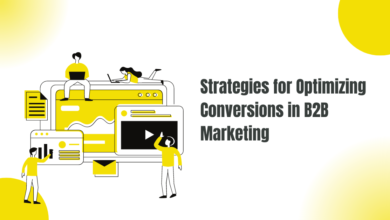5 SEO PRINCIPLES THAT WILL HELP ANY SITE ACHIEVe A HIGHER RANKING

5 SEO FUNDAMENTALS FOR EVERY WEBSITE
It may seem as if there are no limits to search engine optimization (SEO) tactics. The strategies and methods of SEO may vary from quite difficult to shockingly simple. SEO is an industry that is often characterised by rapid change. On the other hand, there are certain SEO foundations and strategies that will never get out of date.
It doesn’t matter whether you’re a blogger, company owner, or digital marketer; if you run a website, there are seven foundations of cheapest SEO services india, both from a content and a technical point of view, that may assist generate more visitors to your site. Any website owner or manager should have no trouble using any one of these SEO strategies.
These foundations of SEO will never become obsolete and will build a strong SEO foundation that will position your site to attract more organic visitors over time.
1. Having an Awareness of Your Target Market
The fundamental principle of marketing that is known as “understanding your audience” is also essential for search engine optimization. The purpose of search engine optimization, or SEO, is to increase the visibility of your website in organic search results—not just for any subjects, but for the appropriate topics and to the appropriate individuals. When developing content for your website, it is essential to have a solid understanding of the audience you are attempting to attract and how they do their online research.
A question or query is often the first step in organic search. In the end, the objective is to respond with a response to the question posed by the user. It is essential for the creation of content that is relevant to have a solid understanding of the behaviours, interests, and issues that make up your target audience.
For instance, if I am doing a search for “reviews of women’s trail running shoes,” it is quite probable that I am still in the process of studying shoes and deciding which trail running shoe I want to purchase. It’s probable that I’ll want to go over the product reviews and read the Outdoor Gear Lab’s verdict on the “Best Overall Women’s Trail Runner” (which can be seen below).
If, on the other hand, I search for “women’s brooks cascadia size 9,” I could be closer to the conversion funnel and have a better idea of what it is that I want to buy. The search engine Google’s results need to reflect the shift in the way people are intending to look for things in order to provide more targete product results.
This idea involves gaining a grasp of the questions that your target audience has as well as the motivation behind their searches, and then producing excellent content that provides answers to those questions.
Researching an audience involves more than simply SEO. Nevertheless, the following are some fundamental strategies that might help you better understand your audience:
Examine the activity of users via the various social media outlets as well as your own statistics. Which kind of content get the highest level of engagement from your audience?
Examine competition instances using search engine results pages (SERPs) to get insight into what your rivals are up to and to determine which of the outcomes Google considers to be important. Google will provide the results that it considers to be the most relevant in response to a user’s search query.
Conduct research on your demography using research apps provide by a third party.
User interviews should be conducte with genuine paying consumers.
Carry out research on keywords using Google AdWords, Google Trends, or one of the many other third-party SEO tools available like SEMrush or Moz Pro.
You should now have a clearer picture of who your audience is as well as the search strategies they use. You will be able to construct your content more effectively to become more relevant in organic search as a result of this.
2. Prioritizing User Experience
The overall quality of the user experience has always been critical for the success of websites and companies. Nevertheless, there are certain measurements of user involvement that have grown more significant for search engine results. Not only can having a better understanding of how a user interacts with your website help you keep that client, but it will also help your site rank higher in organic search results.
The following are some of the components that comprise a positive user experience on a website:
Content that is pertinent, of high quality, and useful; Navigation that is intuitive and user-friendly; Pages that load quickly;
device-specific experiences (such as a website that is optimise for mobile use);
material that is viewable above the fold, as well as relevant calls to action when they are appropriate (e.g., a clickable phone number for local businesses).
Google is aware of both a website’s click-through rate (also known as CTR) as well as its bounce rate. It is not unheard of for results to be teste higher or lower base on the CTRs for that result from SERPs.
When determining the level of user engagement, the speed of the website is an important component. A site that loads quickly may significantly increase conversion, whereas a sluggish site can have the opposite effect. There is a decrease in conversion rate of seven percent for every one second that the website takes longer to load. Use Google’s PageSpeed Insights to evaluate the performance of your website and identify areas in which it may be improve.
Additionally, it is highly crucial to have a mobile-friendly design since the bulk of customers now do their searches on their mobile devices. Use Google’s Mobile-Friendly Test to determine whether or not your website is optimise for mobile use.
3. Making Investments in Content of High-Quality
It is common sense to put money into producing high-quality content. Your audience can only be reache via your content. The growth of your web traffic and the expansion of your brand’s exposure both require that you first have an understanding of your audience and then provide content that is captivating.
Getting a grasp on your brand’s target demographic and doing in-depth research to determine the kinds of material that pique their interests is the first step in this process. This may be accomplishe by research on keywords, research on competitors, or study on the behaviour of audiences.
Developing high-caliber, extende-form content is the single most important thing you can do to propel yourself to the top of search engine results pages. There have been a great number of research conduct within this sector that have demonstrate that a substantial association exists between lengthy content and better ranks. Long-form content isn’t the only element that determines search engine results, although it may be helpful. Other variables include. Recent research conduct by Backlinko reveal that the typical result that appears on the first page of Google comprises over 1,900 words. That is one really lengthy essay!
The word count for the Backlinko SEO content analysis
Backlinko.com is the source of this information.
In addition, periodically curating new material or updating current content is a great way to demonstrate to search engines that your website has “fresh” information. This will help you rank higher in the search results. It is possible to demonstrate to search engines that the material you provide is of high quality and relevant to the needs of consumers by ensuring that it is current and often update. Crawling of your website and content will increase as a direct result of the addition of fresh material.
4. Optimizing On-page Elements
When search engine optimization specialists discuss “on-page components,” they almost always refer to title tags and meta descriptions. On the other hand, we are going to take this strategy one step further and add header tags and pictures as part of our on-page optimizations.
Since we’ve previously spoken about improving the quality of your content and optimising it for search engines, here are some more essential areas that you’ll want to focus on improving in your content:
The title tag as well as the meta description
Heading tags Images
The Title Tag as well as the Meta Descriptions
The title tag and the meta descriptions of a page are the fragments of text that appear in search engine results (including URL and any other search features). On a search engine results page (also known as a SERP), the following is an example of how titles and descriptions are display:
Source of the Google Title Tag and the Meta Description:
The title tag and meta description of a page are of utmost significance for a number of different reasons. It is the very first experience a consumer may have with your company and brand (from organic search). Title tags are considere to be direct ranking score elements. The click-through rates of a website are highly influence by both its title tags and its meta descriptions (which is an indirect factor in ranking). Within the meta description, the user’s search terms are bolde, which further increases the information smell of the page.
There are a few methods you may optimise titles and descriptions without doing any tests at all, despite the fact that I am a strong proponent of conducting experiments to determine the ideal title and description combination for a certain page. In the end, you want the title tags and meta descriptions of your page to accurately represent its primary subject matter. This may entail having a grasp of the results of your keyword research and the primary focus of your content.
When it comes to optimising titles and descriptions, the following are some helpful tips:
Take into consideration the placement of keywords in title tags as well as meta descriptions. You should strive to have your primary subject matter prominently interwoven throughout both, and you should also add relevant keyword variations.
In order to entice readers to go over to your site, include a call to action in your meta description.
To improve your click-through rate (CTR), your title tag should have distinctive characteristics, such as numbers (for example, “7 Best Italian Restaurants”), symbols, and words that pique the reader’s interest (e.g., best, top, ultimate, complete, etc.)
It is important to keep in mind the length of both your title and description since they will be truncate on the search engine results page (SERP) at a character count of about 60 to 70 for the title tag (600 pixels) and 150 to 160 for the meta description.
If you are intending to do an experiment to analyse the effectiveness of your title tags and meta descriptions, the following are some general recommendations to keep in mind:
Determine which buckets will serve as the control and the test. These should be pretty comparable with regard to the level of consistent traffic and the market. If you do not have control and test variants that are comparable to one another, you should run a test group and a control group simultaneously in order to monitor the findings.
Give the exam a certain period of time to run uninterrupte (at least three to eight weeks to allow search engines to pick up and re-evaluate the new content).
Analyze the outcomes of performance using analytics, webmaster tools, and keyword ranking systems.
Analyze the outcomes both before and after the change, paying particular attention to organic traffic and keyword ranking. Choose the victor whose result demonstrates the greatest amount of improvement.
Heading Tags
Users and search engines alike benefit from a page that has been semantically structure thanks to heading tags. Users have a frame of reference to work with, and heading tags, which are helpful for targeting important phrases on a page, give that.
You have the ability to markup header tags in the page’s code, such as h1, h2, h3, and so on. Although attention should be use when selecting any and all heading tags, the h1 and h2 heading tags are particularly significant for search engine results.
example of an H1 heading tag
This heading tag makes sense for the information that is shown on the page. And is pertinent to the question that I aske.
The h2 heading tags on a page will probably be use for supporting headlines. That are supplementary to the h1 heading tag on that page.
It ought to be possible, inside the editing tool of content management system. (CMS) platforms like WordPress, for you to simply designate new heading tags for an item. On your blog as you are modifying the ones that are already there.
Images
Readers benefit visually from images, but it is crucial to optimise image tags for search engines. You may strengthen the relevancy and descriptive power of a page’s. Keywords by optimising the picture alt text and file name for that page.
Both the picture alt text and the file name should be a concise statement. That represents the image in an appropriate manner. Consider the words that you would use to describe the picture as well. As the primary content of the page that you are working on.
Using the sample that TripAdvisor provides for “Italian Restaurants in Bend,” the following picture serves as an example:
Both the picture alt text and the file name provide information about the neighbourhood pizzeria. s. This results in a more consistent approach and improves the readability of the content for search engines.
5. Establishing an Unmistakable Site Architecture
It is crucial to have a site design and navigation system that has been properly thought. Out in order to attract and keep users. Having a clear site architecture involves a number different aspects, including the following:
determining which of your website’s pages are the most vital, then working to ensure that they are simple to get
Having a top navigation and a footer navigation that have both been carefully considere
Making certain that every page on a site is connecte to or coming from another page on the same site
Nobody enjoys being strande on a page that acts as a “island. And prevents them from navigating to other parts of the website. The same principle applies to internet search engines. According to Google’s quality rules, a page is regarde to be of poor quality. If it cannot be accesse from the site. And does not connect to other parts of the site. More precisely, this kind of page is known as a “doorway” page. Because of this, essential internal linking signals from other sites will not be receive by this page.
In addition, the language and arrangement of the navigation on your website are important factors. Do some research to find out which categories and keywords will be most beneficial to your user. Both the user experience and the accessibility of the site to search engines will be improve. As a result of this change, as the pages will be organise into categories. That have been given careful consideration and the site’s most significant pages will be place in an easily navigable section.
Take, for instance, a glance at the main page and the categories offere by REI. From the top navigation, we can see that it has merge quite. A few components into the design of the website, including the following:
REI is known for a number of brands and goods, some of which include its primary online retail location, garage. Adventures, workshops and events, and journal.
Important links pertaining to shopping, including sign-in, store finder, and cart
Every page on the site should include a link to the homepage (in the form of the logo).
The following is an example of navigation using shopping categories that are group together according to activity, gender, and discounts:
REI has obviously given some consideration to the things that a user might find. Useful as well as the most essential parts of the website for the purposes of navigation. In addition, including links to these essential pages within the primary navigation. Draws attention to the relevance of these pages to search engines.
You don’t have to repeat links from the navigation in the footer. But be cognizant about the accessibility of page types and what you think is helpful for users.
In addition to creating a clear site architecture, having consistent and clean. URL structures can aid in the organisation of your navigation, page hierarchy, and analytics tracking. Think about the subfolders off the root domain.
Read more,click here:




